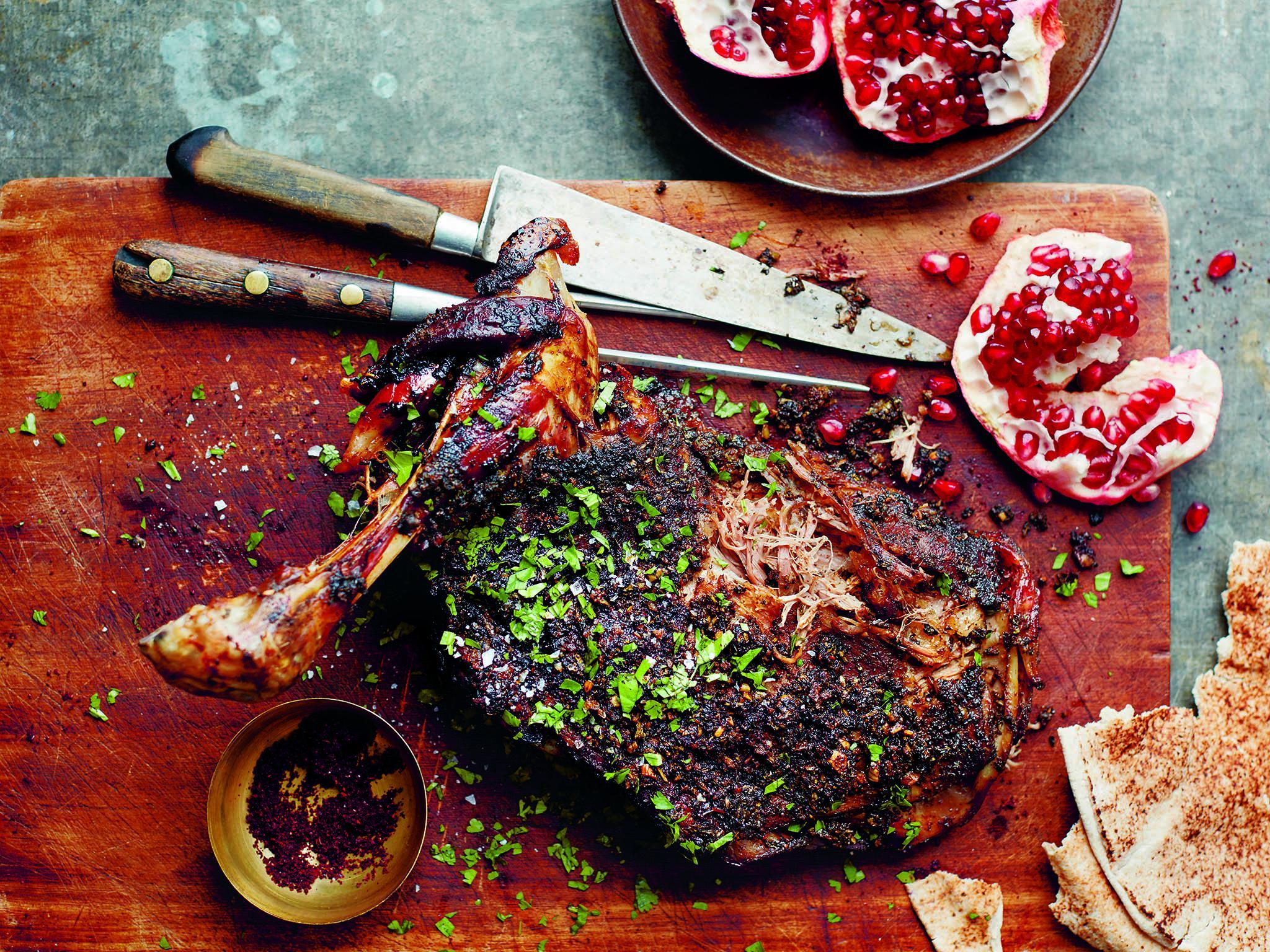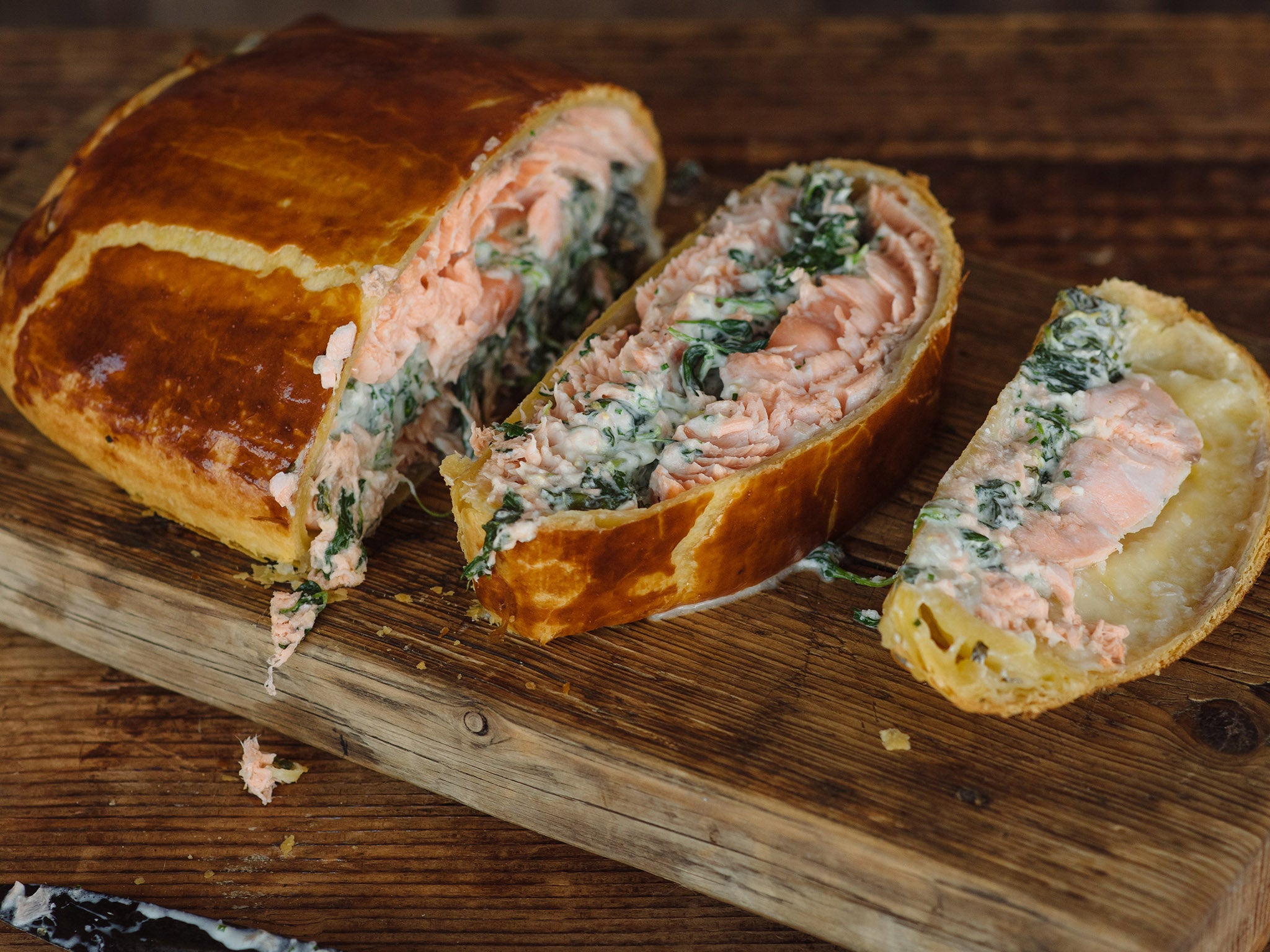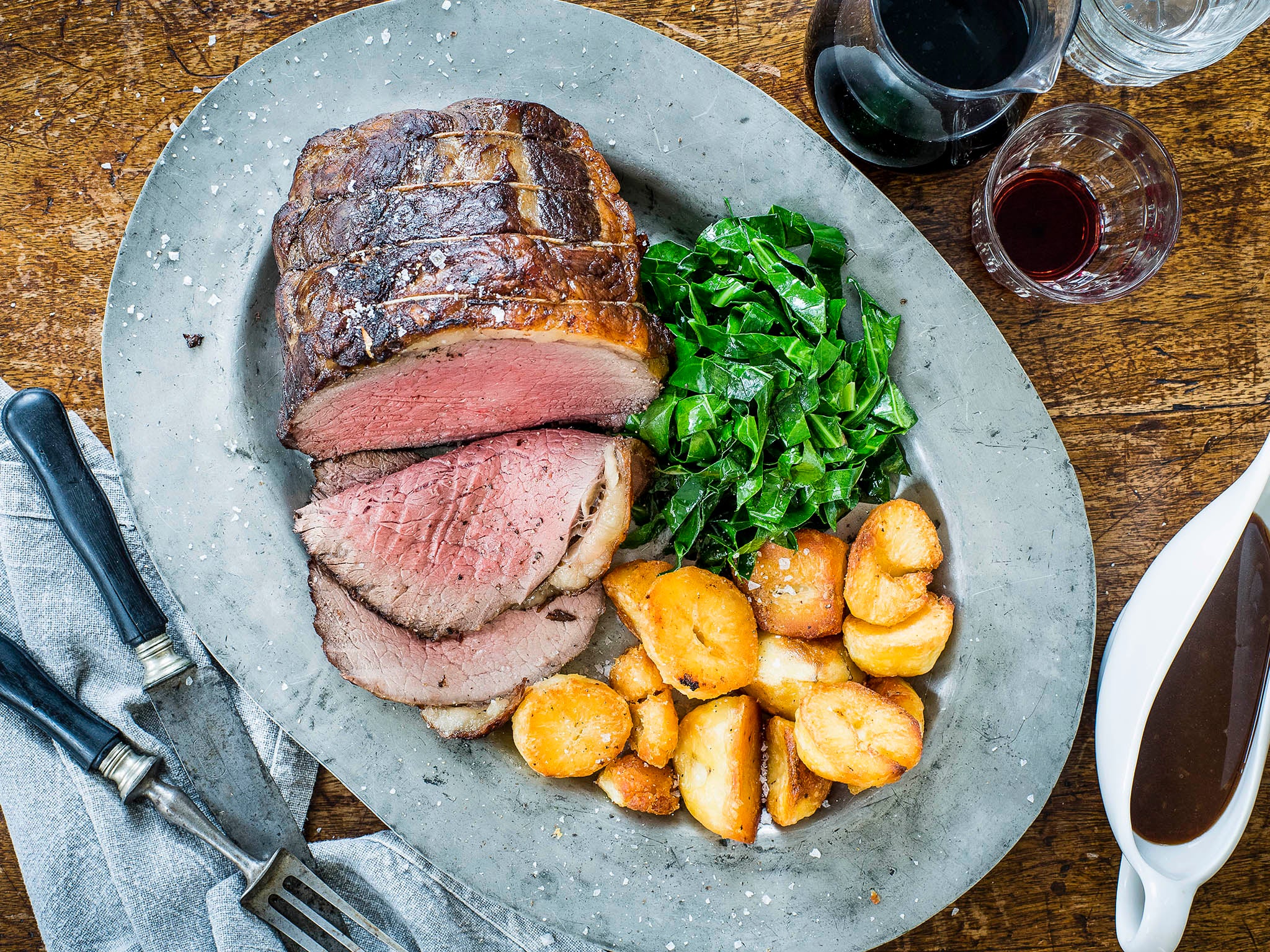Christmas 2018 recipes: Three alternative mains to turkey
For some, it’s not all about that seasonal bird that no one eats at any other time of the year. Instead, pick your favourite meat and cook it just how you like it. Here’s some inspiration

Slow-roast shoulder of lamb with Palestinian spices
This showstopping roast is a great dish for entertaining. When slow-roasted in this way, the lamb becomes so meltingly soft that it falls off the bone, perfect for stuffing into pockets of flatbread alongside salads, yoghurt and pickles, shawarma-style. Start it the night before, so the marinade has a chance to infuse the lamb. The pomegranate molasses will blacken a little in the oven, but don’t worry, that isn’t a sign that the meat is burning, it will still be utterly juicy and succulent under the crust.
2kg whole shoulder of lamb, on the bone
3 tbsp extra virgin olive oil
100ml unsweetened pomegranate molasses 5 garlic cloves, crushed
25g coriander leaves and stalks, finely chopped, plus more to serve
1½ tbsp dried mint
1½ tsp ground cumin
1½ tsp ground allspice
1½ tbsp sumac, plus more to serve
Sea salt and freshly ground black pepper
Handful of pomegranate seeds, to serve
The day before you want to eat, place the lamb in a large roasting dish and slash the meat in a cross-hatch fashion on both sides, cutting deeply and right down to the bone.
Mix the remaining ingredients together, except the pomegranate seeds, seasoning with 2½ teaspoons of salt and 1 teaspoon of pepper. Rub this marinade into the meat, then spend some time massaging it into all the little nooks and crannies. Cover and place in the fridge to marinate overnight.
The next day, take the lamb out of the fridge 20 minutes before you cook it so it comes to room temperature. Preheat the oven to 160C/fan 140C/gas 3.
Pour a mug of just-boiled water into the roasting dish, then place the lamb in the middle of the oven. After 30 minutes, cover it with foil to stop the edges burning and baste the meat every hour. Cook for about 4 hours. You’ll know it is ready when it is so soft that you can easily pull the meat from the bone.
When the lamb is cooked, leave it to rest for 15 minutes. Scatter with pomegranate seeds and coriander just before serving, and have some sumac handy at the table to sprinkle over each portion.
Extract from ‘Zaitoun’ by Yasmin Khan. Photos Matt Russell

Salmon wellington
People are always looking for dinner party and special-occasion ideas, and this recipe ticks all the boxes. You can get the dish prepared in advance, allowing you to relax and enjoy the evening as much as your guests, as all you have to do is bake and then carve the salmon. Just be careful to really squeeze all the excess water out of the spinach after cooking. Also, when you’re carving use a really sharp knife or serrated knife. I’m sure if you try this it will become a favourite in your family, too.
100g spinach, thick central stalks removed
100g watercress sprigs
1 garlic clove, peeled but left whole
Olive oil
1 shallot, finely chopped
30g cream cheese
2 tsp chopped dill
1½ tbsp creamed horseradish
300g puff pastry, thawed if frozen
Plain white flour for dusting
2 salmon fillets, about 250g each, skinned and pin bones removed
1 free range medium egg, beaten
Sea salt and freshly cracked black pepper
First prepare the spinach and watercress for the filling. Rinse the spinach and watercress well and shake dry. Spear the garlic clove with a fork. Heat a well-seasoned saute or frying pan over a medium-high heat, then add a splash of oil. When it is hot, add the spinach and watercress with just the water clinging to the leaves, season with salt and toss with the garlic until the spinach is just wilted. Tip into a sieve and squeeze out the excess water, then transfer to a bowl and set aside.
Wipe out the pan and reheat over a medium-high heat, then add another splash of oil. Add the shallot with a pinch of salt and saute for 1 minute before adding the spinach and watercress and mixing together. Remove the pan from the heat, transfer the spinach mixture to a bowl and leave cool completely.
When the spinach is cool, stir in the cream cheese, dill and horseradish, and adjust the seasoning, if necessary. Line a baking sheet with greaseproof paper and set aside. Make room in your fridge for the baking sheet.
Roll out the puff pastry with a rolling pin on a very lightly floured surface into a 30cm square, about the thickness of a £1 coin. Pat the salmon fillets dry and season them with salt and pepper, then place one fillet in the centre of the pastry. Spread the salmon and watercress mixture over, then top with the remaining salmon fillet.
You now want to completely enclose the fillets in pastry. Use both hands to carefully lift the pastry and fold inwards to meet at the top, so both ends just overlap. Trim off any excess pastry to avoid a layer of unbaked pastry. Brush the edges and press together firmly to seal. Brush the pastry on both short ends with beaten egg and press together, again cutting off the excess pastry. You want about a half-centimetre gap between the edge of the salmon parcel and the pastry seals.
Carefully transfer the salmon parcel to the prepared baking sheet, seam side down. Brush the pastry all over with the beaten egg and chill for at least 20 minutes. When you are ready to bake, preheat the oven to 200C fan/220C/gas 7. Place the baking sheet in the oven and bake the salmon wellington for 35 minutes, or until golden brown. Leave to rest for 5 minutes before slicing.
Extract from ‘Tom Kitchin’s Fish & Shellfish’. Photos Marc Millar

My roast topside of beef
This is my way of cooking a topside. It is placed in the oven at 9am and then left until we are ready for our roast at around 3pm. The topside, though quite cheap, can be a slightly tough cut for roasting, so I strongly recommend that you speak to your friendly local butcher and ask them to source one that has been dry-aged for a minimum of 21 days, preferably 30.
Set your oven to the temperature that you want the meat to end up (see the guidelines below). First sear it, paying attention to getting those lovely caramel reactions in the meat, then season it and put it in the oven. This method also tenderises the meat: as the meat temperature reaches 30C, enzymes in it start to age the muscle. You can never overcook the meat if you set your oven to the temperature you want it to achieve.
1.5kg topside of beef
1 tbsp sea salt
1 tbsp vegetable oil
For the gravy
2 shallots, finely chopped 2 garlic cloves, finely chopped
Sprig of thyme
1 tbsp vegetable oil
1 tsp salt
375ml red wine
1l beef stock
1 tsp Marmite
2 tsp soy sauce
1 tbsp rice wine vinegar
50g unsalted butter, cold
To serve
Roast potatoes
Steamed greens with confit shallots
Preheat the oven to 55C and season the beef all over with the salt. If you prefer your beef medium, set it to 60C and so on. If your oven doesn’t go this low, roast the beef at 220C fan/240C/gas 9 for 30 minutes, then drop to 180C fan/200C/gas 6 and roast until a meat probe reads 55C, which should take about 1½ hours.
Heat the oil in a frying pan and sear the beef on each side until golden brown (about 2 minutes each side including the ends). Deglaze the pan with 2 tbsp water; reserve these pan juices for making the gravy later.
Put the beef into a roasting tin and cook in the oven for a minimum of 4 hours until the internal temperature reaches the oven temperature you set.
Meanwhile roast your potatoes. Set aside and keep warm. When the meat is nearly finished, prepare the greens. Now make the gravy. Soften the shallots, garlic and thyme in vegetable oil in a saucepan over a medium heat and season with salt. Add the red wine and reduce until evaporated. Add the beef stock and deglazed pan juices and reduce by half. Add the Marmite, soy sauce and vinegar and reduce by another quarter. Whisk in the cold butter to finish.
After removing the beef from the oven, leave it to rest for 15 minutes. Slice the beef (thick or thin as you like) and serve with the greens, roast potatoes and gravy.
Extract from ‘World on a Plate’ by Jack Stein. Photos Paul Winch-Furness
Join our commenting forum
Join thought-provoking conversations, follow other Independent readers and see their replies
Comments